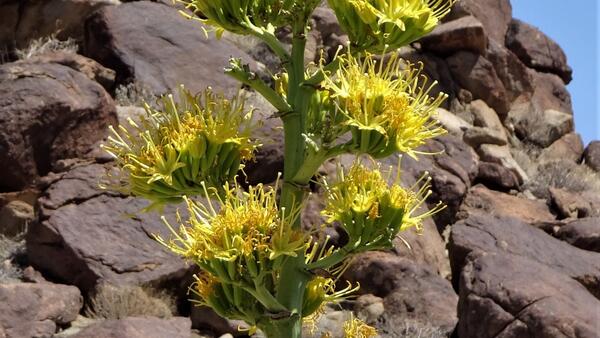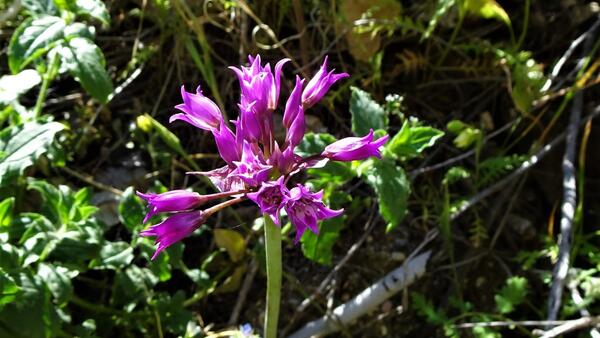The value of naturalists
“Mutation is random; natural selection is the very opposite of random.” — Richard Dawkins
“The environment selects those few mutations that enhance survival, resulting in a series of slow transformations of one lifeform into another, the origin of a new species.” — Carl Sagan
That two naturalists, one self-educated and the other with a university degree aimed at being an Anglican pastor, independently came up with the theory of natural selection is astonishing. Wallace’s and Darwin’s theory has been at the foundation of all biological studies for nearly 160 years. Whether searching for cures for diseases, understanding why species live where they do, understanding what is a species, how they coexist with other species, or predicting how species might survive a much warmer earth, an understanding of the power of natural selection creates a framework for conducting modern research.
Nevertheless, over the past decades, there has been a growing bias against hiring new scientists at universities if their primary focus is still natural history. The result is that the importance of natural history is not being passed along to new students. In fulfillment of a self-prophecy, leading discoveries are now mostly laboratory-based inquiries into questions focused on a scale that ignores populations, or even species. They are focused on molecules and in particular the genetic basis for life. To be clear discoveries in this arena have been extremely important advances in science, but there is increasing separation between understanding molecules and applying that knowledge to what is happening in nature. In an era where the human impacts on our planet, and the growing evidence that many species may not be able to survive those impacts, a holistic, naturalist perspective is vital.
Back when natural history was front and center to much of biological research, professors from the University of California realized that the human footprint on California was increasing. They reasoned that there needed to be a series of research stations across California that both protected examples of what California once was and provided field sites to conduct research in relatively undisturbed landscapes. Drs. Bill Mayhew, Mildred Mathias, and Ken Norris, all naturalists, lead this effort that resulted in the creation of University of California’s Natural Reserve System in 1965. Here in the desert, the Philip L. Boyd Deep Canyon Desert Research Center was among the flagship sites that provided the foundation for that system.
A few weeks ago, I had a dinner conversation with Dr. Chris Tracy (Boyd Deep Canyon Director) and Mark Fisher (Boyd Deep Canyon Biologist), which drifted to the increasing lack of university instruction focused on natural history, and then on a proposal within the UC Natural Reserve System to monitor the status of the biological resources within each of their reserves. Creating an objective “score card” of the status of California’s biodiversity could be vitally important for understanding how our human footprint has impacted this most biologically diverse region of the contiguous United States. My mind raced to imagine just what such a monitoring program might include. With hundreds of species of plants, dozens of species each of reptiles, birds and mammals, thousands of species of arthropods, and perhaps millions (tens of millions) of microbial organisms in the soil at each reserve, where would one start? Where would they find naturalists knowledgeable in each of these areas? But before we could start debating how to create such a score card, Chris explained that the current, Natural Reserve System-wide proposal, much to all of our exasperation, was not to assess species at all. Rather the idea is to catalogue environmental DNA molecules (eDNA), which are molecules sloughed off species as they move through the reserves. All life uses DNA (or RNA) for reproduction and construction of additional molecules for growth and metabolism. Each of our cells include these molecules, and as we, like all species, conduct our lives we regularly, if not constantly, are sloughing off cells, scales, hair, and the like, leaving a “shadow” of our existence. This shadow of eDNA includes DNA and RNA fragments, however, those molecules most likely would not be tied to individual species. Rather the monitoring plan would apparently be to look at the diversity of DNA molecules and assume that changes in these molecules would be evidence of changes to whole organisms, to populations, or to species. Back to a molecular scale approach to understanding our environment, but with no real ability to identify which species were most sensitive to change, what factors drive population change, or which species are survivors, and which are losers.
Molecular scientists have sometimes asserted that the days of naturalists are gone, that after centuries of natural history-based research, all important discoveries have been made. If anyone was interested, the fruits of those naturalist-based efforts were available, collecting dust in university museums and herbaria. That argument ignores amazing discoveries occurring every day by looking at whole organisms, discoveries that more often than not drive home the power of natural selection in molding species to be successful in an ever-changing world.
One of our naturalists, Rob Tanner, recently passed along one such discovery. Most plants have flowers, structures exquisitely evolved to attract pollinators. Within those flowers are often glands that excrete sugar-laden nectar, a reward to attract pollinators. But manufacturing nectar has a cost; it uses water and energy that a plant might otherwise use for growth or for extending their roots in an effort to gain additional nutrients. So much of life is defined by cost-benefit calculations, aimed at maximizing reproduction and/or ones’ health and extending one’s life, objectives that can sometimes be at odds. An Israel-based research team was interested in factors that might allow plants, and their flowers, to regulate nectar production, maximizing their cost benefit calculation (link to article: doi: 10.1111/ele.13331 or click here). They tested the effect of sounds.
Seems like an odd choice, given that flowers have never been known to have ears, but it was a choice that yielded a very interesting result. They played sounds with different frequencies and then measured the flowers’ nectar sugar concentration. As expected, most sounds had no impact on the flowers’ nectar. However, when they played the humming sound of a foraging bee’s wings, within minutes the flowers increased the sugar concentration of their nectar. Increasing the quality of the nectar reward flowers offer their pollinators would increase the likelihood of the bees alerting their hive sisters and returning quickly in mass to gather more nectar – and in doing so pollinating more flowers. Don’t waste sugar production unless bees are present and active. Maximize their cost benefit calculations to produce the most seeds. Finely tuned natural selection at work.
Finally, not only do naturalists uncover the mysteries of nature in ways that molecular-based research could never do, sometimes they can do so poetically. Here is the final paragraph of Darwin’s “Origin of the Species”: "It is interesting to contemplate a tangled bank, clothed with many plants of many kinds, with birds singing on the bushes, with various insects flitting about, and with worms crawling through the damp earth, and to reflect that these elaborately constructed forms, so different from each other, and dependent upon each other in so complex a manner, have all been produced by laws acting around us. These laws, taken in the largest sense, being Growth with reproduction; Inheritance which is almost implied by reproduction; Variability from the indirect and direct action of the conditions of life, and from use and disuse; a Ratio of Increase so high as to lead to a Struggle for Life, and as a consequence to Natural Selection, entailing Divergence of Character and the Extinction of less improved forms. Thus, from the war of nature, from famine and death, the most exalted object which we are capable of conceiving, namely, the production of the higher animals, directly follows. There is grandeur in this view of life, with its several powers, having been originally breathed by the Creator into a few forms or into one; and that, whilst this planet has gone circling on according to the fixed law of gravity, from so simple a beginning endless forms most beautiful and most wonderful have been, and are being evolved."
Nullius in verba
Go outside, tip your hat to a chuckwalla (and a cactus), think like a mountain, and be safe.

